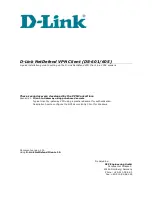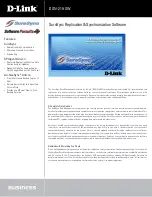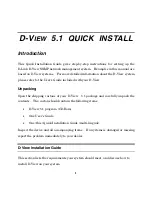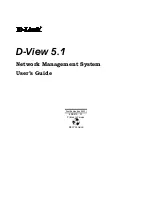
Static VLAN Subinterfaces Within VLAN Subranges
You can configure a static VLAN subinterface with a single-tagged VLAN ID or
double-tagged S-VLAN ID, or an S-VLAN ID with agent-circuit-identifier information
that falls within an existing bulk-configured VLAN subrange. Conversely, you can
also create a bulk-configured VLAN subrange that includes the single-tagged VLAN
ID or double-tagged S-VLAN ID on a static VLAN subinterface. Configuring static VLAN
subinterfaces within VLAN subranges can be useful when you want to create a column
statically for users who have difficulty logging on. You might also want to configure
static VLAN subinterface within a VLAN subrange as a static column to the DSLAM;
the dynamic column can be for subscribers.
The following rules apply when you configure either a static VLAN subinterface within
an existing bulk-configured VLAN subrange or a subrange that includes an existing
static VLAN interface:
■
You have no restrictions on how to configure the static VLAN subinterface.
■
Static VLAN interfaces defined within a bulk-configured VLAN subrange are stored
in NVS and preserved after a reboot.
■
The base profile associated with the VLAN subrange does not apply to any
statically defined VLAN interfaces that fall within the subrange.
■
If a VLAN subrange includes a statically defined VLAN subinterface, overriding
profile assignments configured for the same VLAN ID as a statically defined VLAN
subinterface become inactive until the static VLAN subinterface is removed. The
overriding profile becomes active again when you remove the static VLAN
subinterface. You can display the current operational status (active or inactive)
of overriding profile assignments by using the
show vlan bulk-config
command.
■
Operations that add, remove, modify, merge, disable, or enable VLAN subranges
within a bulk-configured VLAN range do not affect any static VLAN subinterfaces
defined within the VLAN subrange.
■
You cannot create a static VLAN if the single-tagged VLAN ID or double-tagged
S-VLAN ID conflicts with an existing VLAN dynamic subinterface column. Such
a configuration would disrupt subscribers already connected to the router via
the dynamic subinterface.
For configuration information and examples, see “Configuring Static VLAN
Subinterfaces Within VLAN Subranges” on page 686.
Configuring a Dynamic VLAN Subinterface
To configure a dynamic VLAN subinterface:
Configuring VLAN Dynamic Subinterfaces
■
667
Chapter 18: Configuring Dynamic Interfaces Using Bulk Configuration
Summary of Contents for JUNOSE 11.1.X - LINK LAYER CONFIGURATION 4-7-2010
Page 6: ...vi...
Page 8: ...viii JUNOSe 11 1 x Link Layer Configuration Guide...
Page 26: ...xxvi List of Figures JUNOSe 11 1 x Link Layer Configuration Guide...
Page 34: ...2 Chapters JUNOSe 11 1 x Link Layer Configuration Guide...
Page 230: ...198 Monitoring VLAN and S VLAN Subinterfaces JUNOSe 11 1 x Link Layer Configuration Guide...
Page 258: ...226 Monitoring 802 3ad Link Aggregation JUNOSe 11 1 x Link Layer Configuration Guide...
Page 334: ...302 Troubleshooting JUNOSe 11 1 x Link Layer Configuration Guide...
Page 394: ...362 Monitoring Multiclass MLPPP JUNOSe 11 1 x Link Layer Configuration Guide...
Page 406: ...374 Monitoring POS JUNOSe 11 1 x Link Layer Configuration Guide...
Page 468: ...436 Troubleshooting JUNOSe 11 1 x Link Layer Configuration Guide...
Page 498: ...466 Monitoring Bridged Ethernet JUNOSe 11 1 x Link Layer Configuration Guide...
Page 546: ...514 Monitoring Cisco HDLC JUNOSe 11 1 x Link Layer Configuration Guide...
Page 747: ...Part 2 Index Index on page 717 Index 715...
Page 748: ...716 Index JUNOSe 11 1 x Link Layer Configuration Guide...
Page 774: ...742 Index JUNOSe 11 1 x Link Layer Configuration Guide...
















































